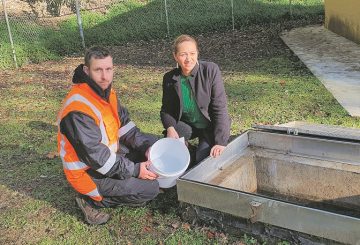국제적으로 호평을 받고 있는 뉴질랜드의 건축가이자 연구자인 앤서니 호에테(Anthony Hoete) 교수가 옛 마오리 건축 기술을 되살리기 위해 영국에서 돌아왔다.
그는 1931년 네이피어 지진으로 파괴된 베이 오브 플렌티(Bay of Plenty) 화레누이(wharenui, 마을 집회소 또는 예배당) 재건을 위해 오클랜드 대학교의 팀을 이끈다.
건물 내진 복원력을 향상시키는 것을 목표로 하는 이번 재건축은 미미로(Mīmiro)라고 불리는 전통적인 마오리 건축 방법이 포함된다.
교수는 “미미로의 기원은 우리 조상들이 태평양을 횡단할 때 사용하던 선박 기술;배, 튼튼한 돛으로 거슬러 올라갈 수 있다. 우리 선조들에게는 구조물을 만들 때 필요한 강도와 장력을 만드는 해박한 지식이 있었기 때문이다. 따라서 잃어버린 기술을 재현해 더 큰 지진 복원력을 부여하는 데 사용하고 싶다”고 말했다.
뉴질랜드에는 미미로 기술을 접목시킨 건물이 하나 남아 있지만 현재 이 기술 전승은 끊겼다.
교수가 이끄는 팀은 Ngāti lra o Waioweka 부족과 긴밀히 협력할 예정이다. 이들은 1860년대에 전통적인 방식으로 화레누이를 지은 부족이다. 이 부족의 조상들을 대표하는 주요 목조 조각품들은 지진 잔해 틈에서 살아남았으며 90년 동안 마라에(Marae, 마을회관) 헛간에 보관돼왔다. 새 건물을 지을 때 이 조각품들을 사용할 것이다.
또한 교수는 지역 사회로 하여금 이번 프로젝트에 참여하도록 하는 데 열정적이다.
“우리는 지역 사회 및 학교와 함께 많은 봉사 활동을 하고 있으며, 지역 청년들 중 일부는 이미 건축업에 관심을 보이고 있다. 이는 놀라운 일이다”
이 프로젝트는 영국 옥스퍼드 브룩스 대학의 토카 투 아케 EQC(지진위원회)와 멸종위기 목조건축 프로그램으로부터 자금을 지원받았다.
이미지 저작권: Toka Tū Ake EQC




















































-360x245.jpg)









